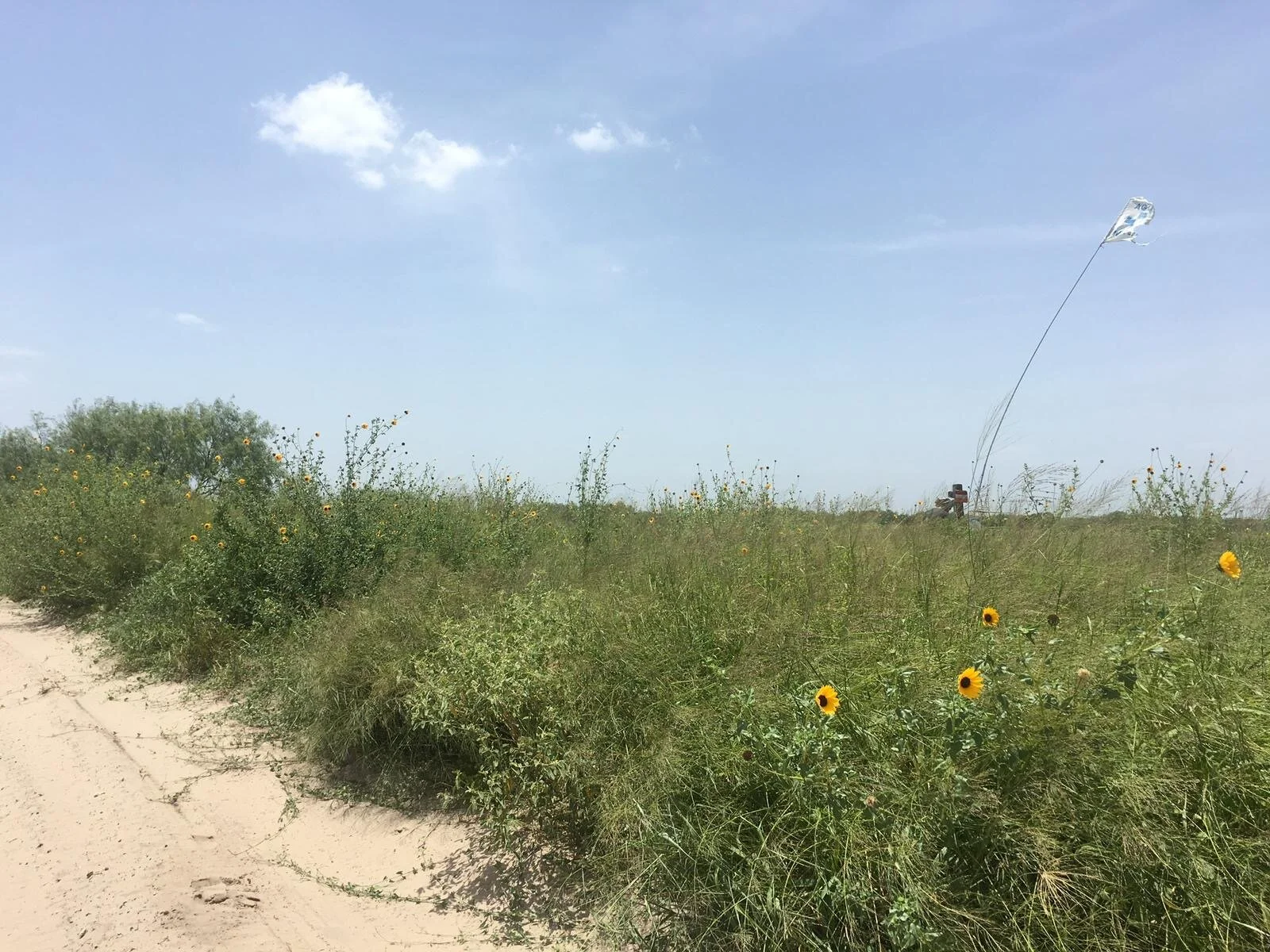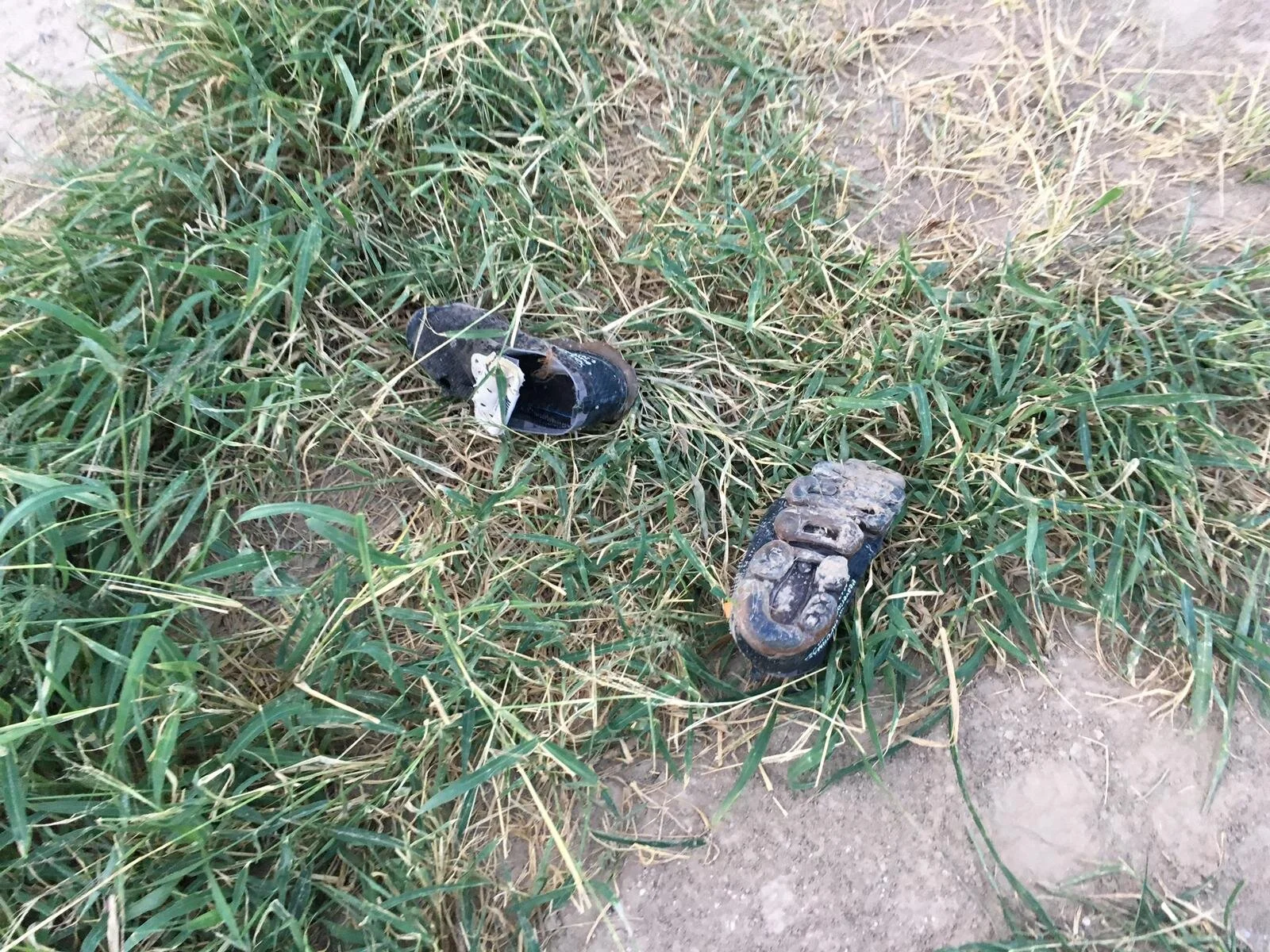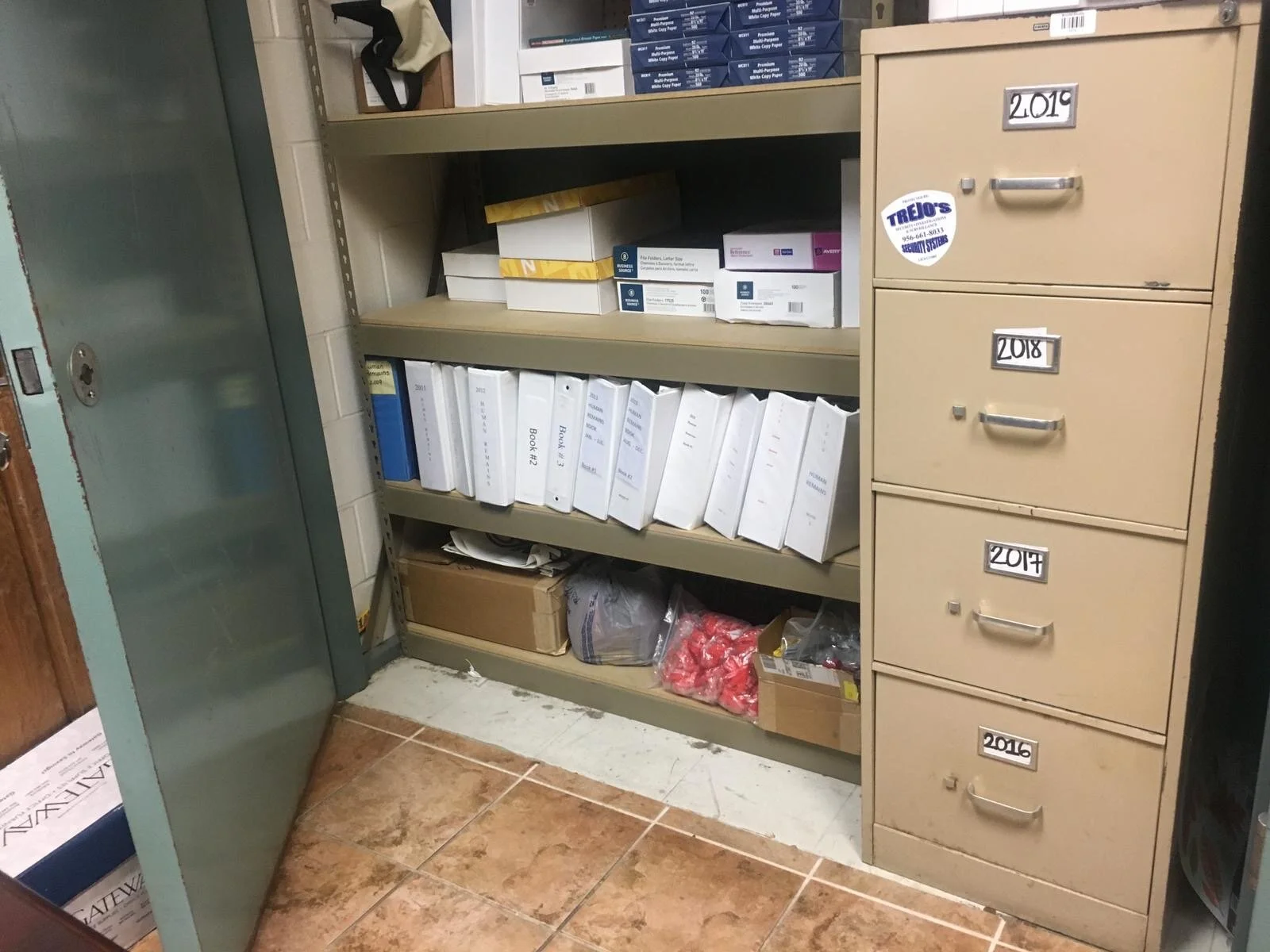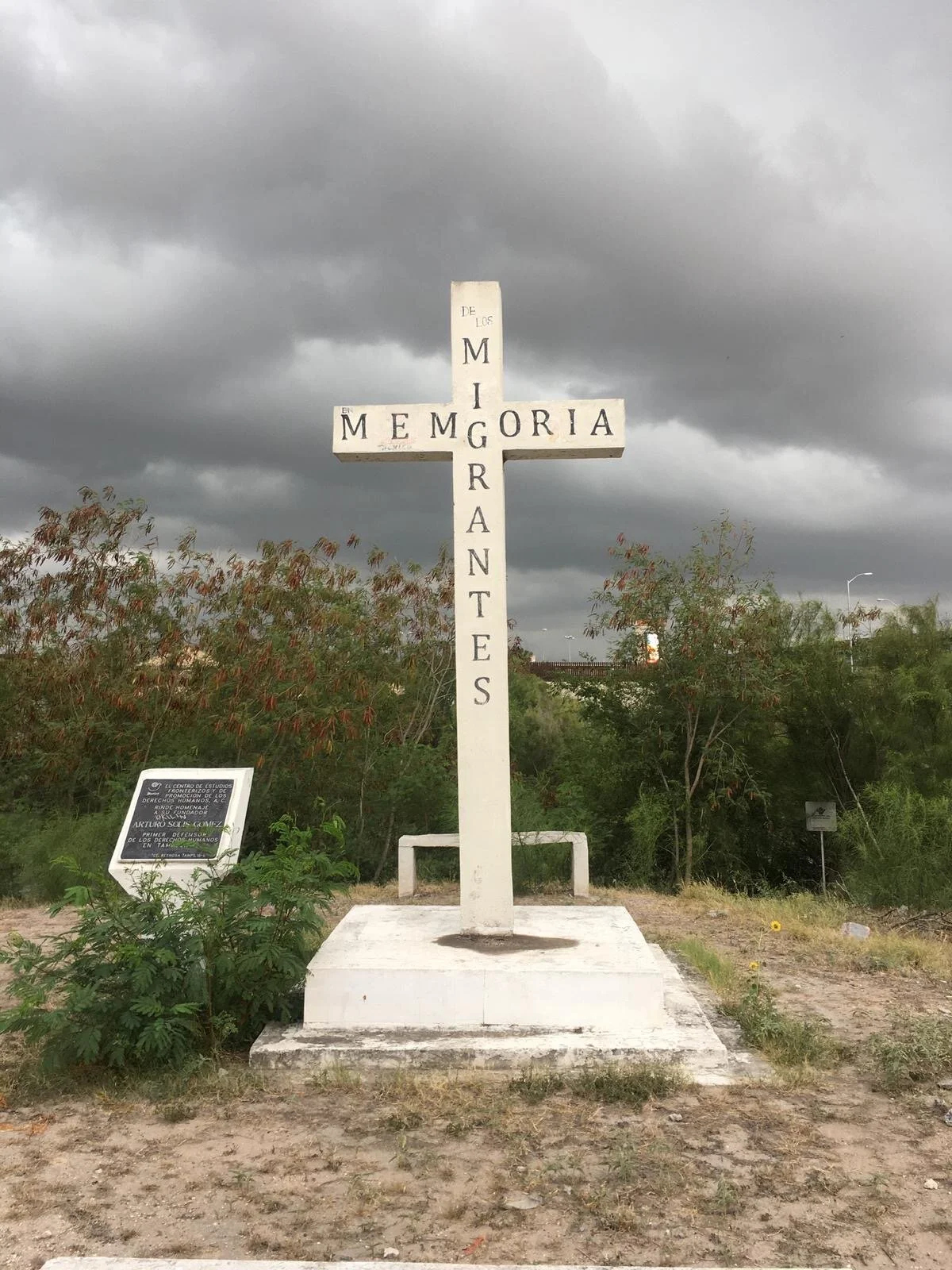Missing migrants in Texas
“Every rancher has their own views towards this and their own interest in publicising what goes on. But I think by and large, ranchers would prefer not to be known as the ranch where people died.”
Stephanie Leutert: Director, Central America and Mexico Policy Initiative, University of Texas at Austin.
Last year, Stephanie Leutert, Director of Central America and Mexico Policy Initiative at the University of Texas in Austin, co-authored Migrant Deaths in South Texas.
The report shares new insight into why more migrants die in South Texas than anywhere else in the United States today.
Stephanie has more than a decade’s experience researching and working on issues concerning US-Mexico relations, Central American migration and the US-Mexico border.
In the following Q&A, she discusses the humanitarian crisis that’s seen at least 7,000 migrants lose their lives along the US-Mexico border since 1998.
A chorus of human rights advocates state that US policy has turned the remote wilderness of the south-west United States borderlands into a graveyard for migrants in this time.
Since United States Border Patrol adopted Prevention Through Deterrence as its primary operational strategy in 1994 (under then-President Bill Clinton), successive US governments have invested billions into fencing, surveillance, border patrol personnel and border militarisation to block migrants from crossing the US-Mexico border through traditional border cities including San Diego/Tijuana, Nogales/Nogales, El Paso/Ciudad Juarez and Brownsville/Matamoros.
Many are risking their lives to circumvent these urban ports.
Stephanie, in this Q&A, shares her knowledge of the crisis and her experiences researching Migrant Deaths in South Texas.
Water left out for migrants in Arizona, where many on migration trails have lost their lives in extreme temperatures and brutal terrain too.
What did the Human Remains Binders in Brooks County Sheriff Urbino Martinez’s office reveal to you about the journeys migrants are taking in the South Texas ranchlands, that you couldn’t have otherwise known?
I think what’s struck me is all the different ways people move through South Texas.
Hiking around the checkpoints continues to be a big one but there are also people travelling in trailers, trunks of cars, and compartments and beds of trucks.
There are all different ways people travel that can pose risks, and people can die.
“‘They weren’t pulled out of the trunk in time, and they died – they suffocated in the trunk.’”
For example, if they’re going in Duval County – that’s right north of Brooks County – some people who are deceased, if they’re migrants, are found laying on the side of the road.
I didn’t know this back when I first opened the binders, and I wondered, ‘What’s going on? Do they get to the road and they die?’
They were saying, ‘No, they were people in the trunk of the car who were going through the checkpoint. They weren’t pulled out of the trunk in time, and they died – they suffocated in the trunk.’
Then the smuggler just pulls them out the trunk, and leaves them on the side of the road, and keeps driving.
So I think what struck me first was all the different types of people who were travelling on these trails. Later on, it was thinking about all the different ways people are trying to make this journey, and the different risks associated with every single one of those.
Can you talk about ranchers’ reluctance to publicise the migrant deaths that take place on their land?
Every rancher has their own views towards this and their own interest in publicising what goes on. But I think by and large, ranchers would prefer not to be known as the ranch where people died. Especially if they have hunters who are coming to hunt at their ranch for a season – especially if they are a really well-known ranch.
It’s not really good for ranching business to have that reputation. In terms of why people don’t want to publicise it, that’s really why. It’s people’s homes and it hurts their businesses.
So you have a whole spectrum of ideological views towards migration. I would say another commonality throughout is a frustration with irregular migration. Because irregular migrants going through will leave trash, and cattle will eat the trash and get sick. Or they’ll leave gates open and cut through fences, and cattle will get out.
So there’s actual real financial costs for ranchers that have large numbers of people passing through their property, because they do affect the business in various ways.
The South Texas landscapes that migrants traverse on their way into the United States interior are better understood through lived experience. Can you talk about your experiences on the lands that migrants cross between Mexico and South Texas?
I have spent a lot of time in South Texas to write these reports and my other work takes me to the border cities in Mexico. So, I do have some experience in different parts of the trail, whether it’s on the bank of the Rio Grande, or going through the checkpoints, or in the small towns around the checkpoints.
I’ve also been in these areas in the dead of summer. That, along with the sand and the heat, is a whole other force multiplied. It is brutal during summer time out there. It is so hot.
Something I didn’t realise until I started spending a lot of time in South Texas is just how varied the landscape is.
Cameron County — which is Brownsville — is tropical. There are palm trees. I come from Southwest Florida, and it looks very similar to growing up in Florida. As you go up, it turns into mesquite, and it’s a lot dryer.
If you go towards Brooks County, from the road, it looks like mesquite. But if you get up and you’re walking along, you can see right underneath, it’s sand, and it’s very difficult to walk through.
Actually, at the county between Kenedy County and Cameron, down on the gulf, we asked the Sheriff’s deputies there why there are so few migrants dying, and they said that one reason is, ‘Because our land is really hard, so it’s very easy to walk on.’
Whereas further north, it’s sandy, and people really get tired a lot faster.
So the land, it’s shaping people’s experiences with migration.
Loamy terrain and extreme temperatures can be exhausting or deadly for migrants entering the United States interior on foot (supplied: Stephanie Leutert).
When I was down there the second or third time, in July or August, to Brooks County (Falfurrius), I will never forget.
I took a phone call in the shade right outside of town. I was standing for about 45 minutes under a tree and, when I left, I was soaking wet with sweat. I was dripping, every part of my body, and I was 45 minutes standing in the shade.
You can’t walk in that — you can’t travel. But even just sitting in the shade, you lose so much water. It was probably like 110 that day – maybe more. It’s just impossible to keep hydrating enough to not overheat.
So, the physical landscape and the climate, it really affects every part of the migration journey.
The only kind of empathy I can imagine is getting in a car in the middle of a heat wave and sitting in it for five minutes. But I just can’t imagine it.
Personal belongings provide clues about the identify of missing or deceased migrants (supplied: Stephanie Leutert).
The other thing is that it’s prickly out there. I do a lot of hiking around Texas and the landscape is often filled with cactuses. Even if you’re hiking on a trail, you brush by a prickly pear on a cactus and you’ll have the spines all in your clothing.
You try to wipe them off and it’s getting in your hands, and it’s a total mess.
What you want to do if you’re off-roading and you’re walking without paths – there are visible paths where migrants have walked so many times you can kind of see it, but there’s no established paths – is wear long sleeves and pants, so you don’t get totally cut up. But of course, now you’re wearing long sleeves, pants, hiking shoes, and you’re walking in 110 degree weather.
It’s a recipe for heatstroke.
You’ve seen many many images of migrant remains in your work. The few human remains images of migrants I’ve seen on the internet are graphic and confronting but you have looked through hundreds of images for your research. Can you talk about the need to prepare yourself for those experiences?
In retrospect, I probably should have planned a little better.
For Brooks County, alone, I went through 600 files. For the other counties, it was maybe another 600.
Not only do they have photos; some of them sometime still have the IDs that were found on them in the bag that has papers. And you know, ‘Oh, that person had this when they died.’
It brings it to you in a way that’s.... Like, their belongings are now sitting on the table with me, it makes it so real in a way that it really starts to affect you.
I did not do anything to prepare and that was probably a mistake.
Can you talk about what you would tell yourself now if you could go back?
I think I would tell myself it’s a lot more intense than I thought it would be.
That might seem very obvious to most people but my job is such that, before I did this project, I was documenting asylum seekers who were waiting in border cities in Northern Mexico.
I was particularly doing part of the US-Mexico border that leads to Tamaulipas and Coahuila. Those are really dangerous areas, and I would go down there and meet with people and hear really horrible stories of human rights violations, and violence and crimes.
And before that, I was along migrant routes in Mexico, talking directly to people, and hearing horrible stories.
So, when I switched to documenting migrant deaths, I thought, ‘This is going to be easier because at least now I don’t have to stand in front of someone, and hear this horrible story and feel so powerless that I can’t do anything. Now I will sit at a table and flip through sheets of paper.’ It seemed so much more administrative.
What I wish I could have told myself if I went back in time is, ‘No, it’s still trauma. It’s just a different form of trauma.’
One is being personally there and hearing the stories, and that’s traumatic. And the other is looking at pages and pages of trauma. And just because you’re not physically standing with that person, it doesn’t actually make it any easier.
I probably ended up spending about three-and-a-half months in total, going through all the files.
After about a month in, I started having these awful headaches. I was like, ‘Where are these headaches coming from?’
I couldn’t put my finger on it until I was talking to someone and they said, ‘What have you been doing recently?’ I said, ‘I’ve been looking at horrible pictures and case files all day.’
How does your memory store all this? What does it keep and what doesn’t it keep?
I don’t think it holds that many details.
Thinking right now, I could tell you some of the things that people were carrying on them – stuff that I can remember quickly when I think about that project: ‘Oh, that was from a particularly horrific case. This case really exemplified the injustice of this part of the United States immigration system.’
But I have to kind of dig for it, I think. That’s probably some protective mechanism of processing trauma. It keeps it down a little bit so that you’re not living every day thinking about these images of these people.
I see this, not just in this particular migrant death project, but in work along the US-Mexico border. There’s so much trauma among people who are out there every day.
I’m removed from so much of it. I work at UT Austin. I’m not right at the border – it’s about three and a half hours away. It’s so different for people who are living and working every day on these issues in US and Mexican border cities.
You see that burnout and you really see the trauma that people have lived.
In these past four years, but just overall, it’s a really hard issue to work on.
I think so many people who work on it – myself included – for so long, we know that we are so lucky. When I’m sitting in my home and I’m looking at this, I think, how could I have a reaction to this?
I think there’s a greater recognition now of secondary trauma, where just being exposed to so much primary trauma – so many people’s traumas over time – adds up and has that secondary effect.
It makes it hard to keep doing the work if you don’t acknowledge that and find ways to address it.
Not everybody is prepared to take these types of migration risks. There are specific groups who will. Can you talk about the tolerance for risk you need to have to go ahead and set off on these trails?
The short answer is you have to have a high risk tolerance.
The slightly longer answer is that people’s risk tolerances are affected by their natural risk tolerances and their age, but also by their situations.
So if people are in a really terrible situation, they might have a much higher risk tolerance than someone who is in an okay situation.
Let’s say you are in Piedras Negras — which is a city in Coahuila right on the US-Mexico border in Texas — and you want to enter the United States undetected, there are a few ways you could do that.
You could hire a smuggler and they would offer you a set of packages. They’d say, ‘Well, we can take you this way. When you walk through the brush, we can take you this way. We’re going to be in a trailer, and we can take you this way. We’re going to be in a car….’
Follow the blog on Facebook for updates when new blogs are published.
That’s like an escalating safety. It’s going to be most dangerous when you’re walking because you have exposure. Trailer, it’s kind of dangerous because there’s suffocation. Car, there’s also suffocation, but fewer people and shorter time in the trunk. The prices for that escalates – so you pay more, the safer it is.
There was someone I spoke to a while back who said, ‘Yes, I would pay that money (they were in Mexico). But I would only go in a car.’
That was their risk tolerance. They said, ‘I don’t feel safe traveling in a trailer and I certainly don’t feel safe walking, so I’m going to wait until I have enough money to pay for the car.’
This is someone who feels like they can’t go back to their country because of persecution from the gangs that they face, and their children are living in the US. There are all these pressures, and their risk tolerance was saying, ‘I’m only going to take this one specific avenue.’
Every person is different. Some would say, ‘You know what, I really need to be with my kids. I’m willing to take any risk.’ And some people would say, ‘If there’s a chance I’m going to die, I’m not going to take any of them.’
Can you talk about some of the main factors driving people to migrate from Central America and cross the US-Mexico border into the United States?
If you start in El Salvador, really the primary reason people are fleeing, is gang violence.
It’s gang violence in the cities and urban areas, and now also the rural areas… so people all over the country may be facing extortion, and that’s why they’re prepared to leave. Maybe it’s violence in their children’s school. Maybe they’re trying to recruit their children. Maybe someone saw a crime being committed, and then the gangs started saying, ‘You need to leave.’ Maybe a woman is getting harassed by a member of the gangs — there are a lot of reasons why someone could leave because of the gang presence.
Usually in El Salvador, gang presence is why people are leaving. In Honduras, it would be gang presence and a range of other factors as well: gang violence, as well as expensive cost of living and low wages, and low commodity prices — which is another big one in, say, Guatemala.
“On the one hand, people know the dangers. You go to Central America or talk to people on the migrant trail and they know that it’s dangerous.”









